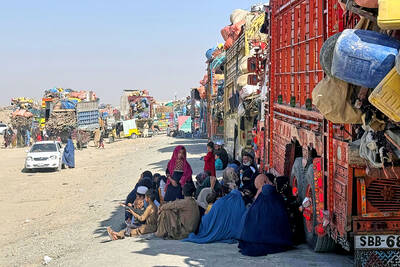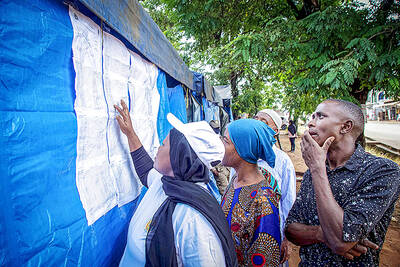Humans are not alone in suffering from the stresses of modern city life. Researchers have found the brown rats of New York City are struggling just as hard to adapt to urban existence.
Indeed it is possible that both humans and rats have undergone parallel shifts in their genetic make-up in response to city life, leaving them prone to similar health threats, such as the effects of pollutants and the consumption of highly sugared foods, they say.
“We know rats have changed in incredible ways in their behavior and in their diet, just as human communities have changed,” said Arbel Harpak, a population geneticist at the New York’s Columbia University. “In New York you can see them eat bagels and beer; in Paris they like croissants and butter. They adapt in amazing ways.”
How profound are the changes? Are rats merely first-class opportunists and scavengers, or have they been changing at a genetic level as they adapt to modern life?
To answer these questions, a team — co-led by Harpak — analyzed the genomes of 29 New York rats which had been lured into traps filled with bacon, peanut butter and oats — favorite rodent treats in the Big Apple.
Then the researchers compared the genomes of the city’s rodents with those of nine brown rats from Heilongjiang Province in northeast China, the original home of Rattus norvegicus.
Their findings — posted last week on online site bioRxiv — included a list of several dozen rat genes that showed major changes in DNA over the centuries as the species spread from Asia to Europe and on to North America, and from the countryside into cities.
These altered genes include those associated with diet, behavior and movement, and reflect the ever-present need for rats to adapt to the challenges of living with humans in a city.
The pressures include increased danger from disease and changes in diets, said the scientists, among them Pleuni Pennings of San Francisco State University and Jason Munshi-South of Fordham University.
One gene highlighted by the team has been linked with changes in location behavior.
“This could reflect the fact that urban rats have to move through highly artificial environments that are very different from natural habitats,” Harpak said. “So you could argue these gene changes might have evolved to help them move more easily through sewers and pipes.”
In addition, the team also pinpointed changes to the gene CACNA1C, which has been repeatedly associated with psychiatric disorders in humans. They suggest that changes in rat behavior, at a DNA level, might be occurring in response to changes in local predators, or to novel stimuli.
The crucial point is that urban rats are so closely associated with human city-dwellers that it is possible similar genetic changes have occurred in both species, the researchers said.
“Like humans, rats live in higher densities in cities, leading to increased pathogen transmission potential,” they said. “In addition, mosquito species that have rapidly invaded urban areas across the world feed on both rats and humans — suggesting a novel, shared-disease exposure.”
The most striking common feature of the lives of urban humans and urban rats is diet, the researchers discovered: both consume an increasingly large amount of highly processed sugars and fats. Such a diet leads to various health concerns, which could also apply to rats.
Exactly when brown rats went through most of these genetic changes is unclear. They could have been recent adaptations or could have occurred several hundred years ago.
“We don’t know but we have plans to find out,” Harpak said.
His team is to test 125-year-old brown-rat pelts from a private collection in New York and analyze them to see if major changes had taken place by the end of 19th century or if they more recently.
“That should give us a clearer indication of when these changes took place,” he said.

With much pomp and circumstance, Cairo is today to inaugurate the long-awaited Grand Egyptian Museum (GEM), widely presented as the crowning jewel on authorities’ efforts to overhaul the country’s vital tourism industry. With a panoramic view of the Giza pyramids plateau, the museum houses thousands of artifacts spanning more than 5,000 years of Egyptian antiquity at a whopping cost of more than US$1 billion. More than two decades in the making, the ultra-modern museum anticipates 5 million visitors annually, with never-before-seen relics on display. In the run-up to the grand opening, Egyptian media and official statements have hailed the “historic moment,” describing the

‘CHILD PORNOGRAPHY’: The doll on Shein’s Web site measure about 80cm in height, and it was holding a teddy bear in a photo published by a daily newspaper France’s anti-fraud unit on Saturday said it had reported Asian e-commerce giant Shein (希音) for selling what it described as “sex dolls with a childlike appearance.” The French Directorate General for Competition, Consumer Affairs and Fraud Control (DGCCRF) said in a statement that the “description and categorization” of the items on Shein’s Web site “make it difficult to doubt the child pornography nature of the content.” Shortly after the statement, Shein announced that the dolls in question had been withdrawn from its platform and that it had launched an internal inquiry. On its Web site, Le Parisien daily published a

‘NO WORKABLE SOLUTION’: An official said Pakistan engaged in the spirit of peace, but Kabul continued its ‘unabated support to terrorists opposed to Pakistan’ Pakistan yesterday said that negotiations for a lasting truce with Afghanistan had “failed to bring about a workable solution,” warning that it would take steps to protect its people. Pakistan and Afghanistan have been holding negotiations in Istanbul, Turkey, aimed at securing peace after the South Asian neighbors’ deadliest border clashes in years. The violence, which killed more than 70 people and wounded hundreds, erupted following explosions in Kabul on Oct. 9 that the Taliban authorities blamed on Pakistan. “Regrettably, the Afghan side gave no assurances, kept deviating from the core issue and resorted to blame game, deflection and ruses,” Pakistani Minister of

UNCERTAIN TOLLS: Images on social media showed small protests that escalated, with reports of police shooting live rounds as polling stations were targeted Tanzania yesterday was on lockdown with a communications blackout, a day after elections turned into violent chaos with unconfirmed reports of many dead. Tanzanian President Samia Suluhu Hassan had sought to solidify her position and silence criticism within her party in the virtually uncontested polls, with the main challengers either jailed or disqualified. In the run-up, rights groups condemned a “wave of terror” in the east African nation, which has seen a string of high-profile abductions that ramped up in the final days. A heavy security presence on Wednesday failed to deter hundreds protesting in economic hub Dar es Salaam and elsewhere, some